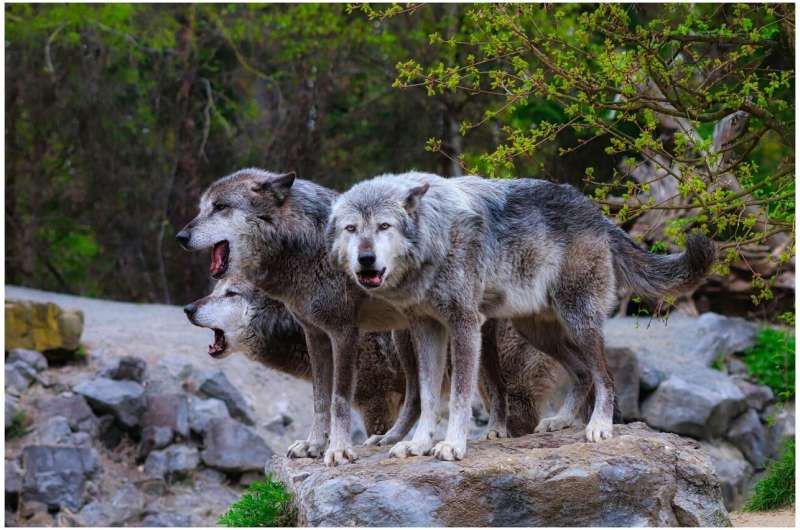This article has been reviewed according to Science X's editorial process and policies. Editors have highlighted the following attributes while ensuring the content's credibility:
fact-checked
peer-reviewed publication
trusted source
proofread
Gray wolf recovery: Conservationists discuss the challenges of success

Over the past 30 years, efforts to recover gray wolf populations in the United States have been broadly successful, with many regions now sporting robust populations of the carnivore. Writing in BioScience, wolf experts David E. Ausband and L. David Mech describe the conservation landscape and also the obstacles that wolves face as their populations expand into their historical ranges.
"Remarkable wolf conservation success yields remarkable challenges," say the authors, as 6,000 wolves now occupy habitat across 11 states. These growing populations now face significant threats as they attempt to colonize human-dominated areas, among them "fragmented habitats and barriers to dispersal, as well as increased encounters with humans, pets, and livestock."
In response to those concerned about wolves' potential impacts to prey populations and domestic livestock production, many jurisdictions have ramped up wolf efforts. For instance, in Wisconsin, "the legislature requires a public hunting or trapping season whenever wolves are delisted from the US Fish and Wildlife Service's (USFWS) list of Endangered species."
In contrast, wolves are seen as desirable in other areas, such as Colorado, where voters recently passed a ballot initiative to reintroduce them in the state. The authors caution that such pro-reintroduction initiatives, which may seem initially promising for wolves, could have the unintended consequence of setting precedent for laws barring reintroduction and thus complicate management. An uncertain regulatory regime, say Ausband and Mech, could cause major fluctuations in wolf populations, with dire consequences for conservation efforts.
The answer to this quandary, the authors suggest, is thoughtful management that carefully considers the needs of diverse stakeholders.
"Future wolf conservation in the United States will be affected by the ability of managers to predict colonization and dispersal dynamics, to reduce hybridization and disease transmission, to mitigate and deter wolf–livestock conflicts, to harvest wolves sustainably while satisfying diverse stakeholders, to avert a reduction in tolerance for wolves due to a disinterest in nature, and to engage diverse stakeholders in wolf conservation to avoid management by ballot initiative or legislative and judicial decrees."
Only through such science-informed management, argue Ausband and Mech, can the present success of wolf conservation be built on in the future.
More information: David E Ausband et al, The challenges of success: Future wolf conservation and management in the United States, BioScience (2023). DOI: 10.1093/biosci/biad053. academic.oup.com/bioscience/ar … .1093/biosci/biad053
Journal information: BioScience
Provided by American Institute of Biological Sciences

















